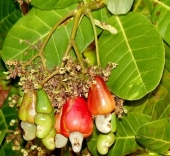




 It's a real shame, because there were lots of lovely healthy looking small tubers on the roots.
It's a real shame, because there were lots of lovely healthy looking small tubers on the roots.
 1
1




"You must be the change you want to see in the world." "First they ignore you, then they laugh at you, then they fight you, then you win." --Mahatma Gandhi
"Preach the Gospel always, and if necessary, use words." --Francis of Assisi.
"Family farms work when the whole family works the farm." -- Adam Klaus
 1
1








 1
1




Dave Quinn wrote:Thanks for advice, just for my information - why not legumes?
Would beetroot be OK?
"You must be the change you want to see in the world." "First they ignore you, then they laugh at you, then they fight you, then you win." --Mahatma Gandhi
"Preach the Gospel always, and if necessary, use words." --Francis of Assisi.
"Family farms work when the whole family works the farm." -- Adam Klaus









 1
1




Dave Quinn wrote:Not sure which, one day loads of good foliage, couple of days later some totally dead, lots with brown/grey dried leaves, can't see any fungus underneath leaves.
 1
1




"You must be the change you want to see in the world." "First they ignore you, then they laugh at you, then they fight you, then you win." --Mahatma Gandhi
"Preach the Gospel always, and if necessary, use words." --Francis of Assisi.
"Family farms work when the whole family works the farm." -- Adam Klaus












R Scott wrote:
Does it have to grow in the affected bed? Or can it be grown elsewhere and brought in as a mulch? Does the benefit carry over if it is composted first?

| I agree. Here's the link: http://stoves2.com |





